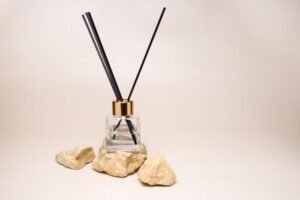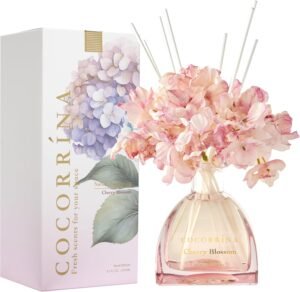Are you tired of traditional air fresheners that fade quickly or contain harsh chemicals? Flower diffusers offer a natural, elegant alternative that can transform your space with subtle, long-lasting fragrance.
Flower diffusers use dried or artificial flowers along with reed sticks to disperse essential oils throughout a room. They serve both as decorative elements and functional fragrance dispensers, offering a more aesthetic alternative to standard reed diffusers while providing aromatherapeutic benefits.
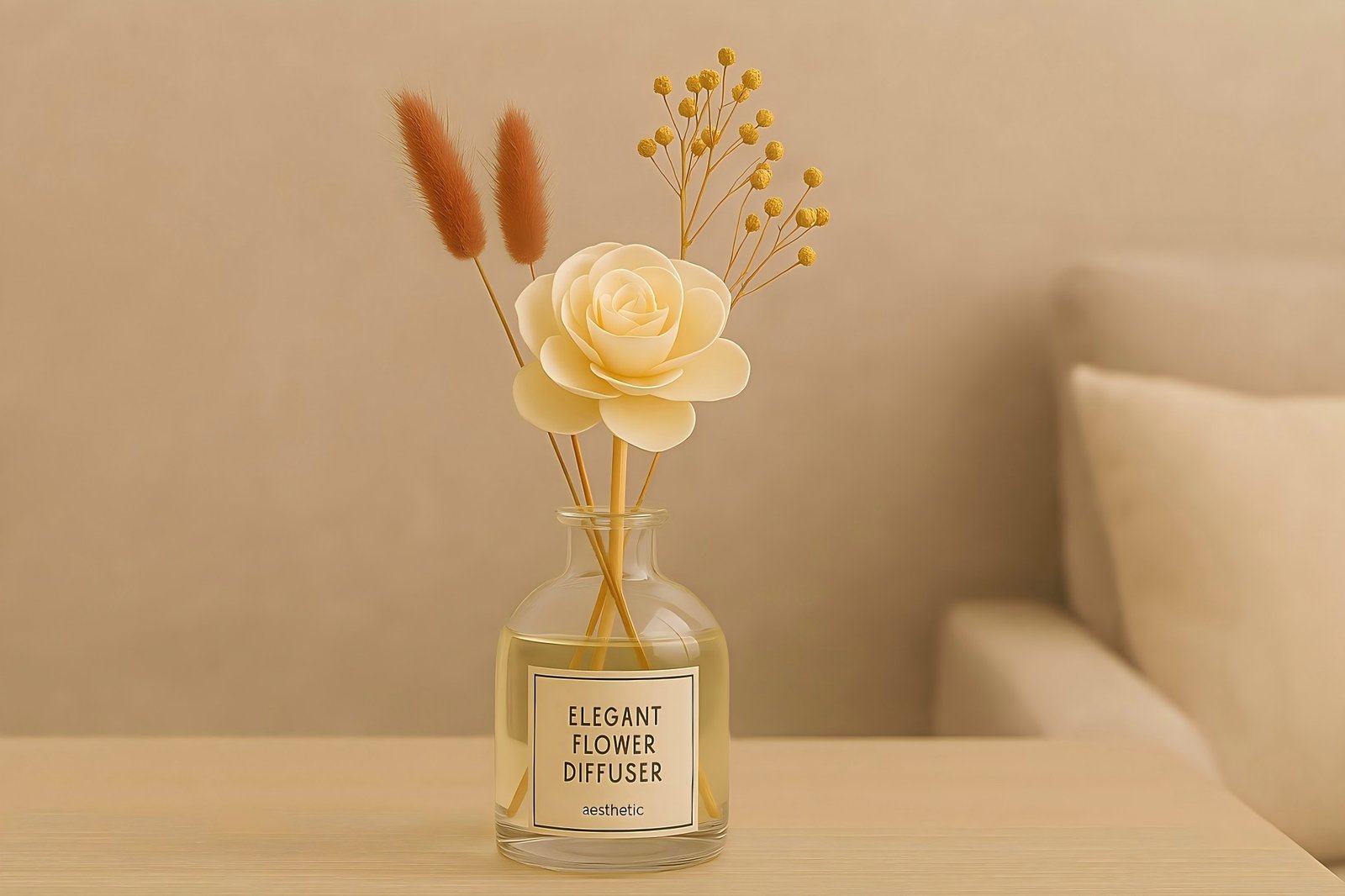
Let’s explore everything you need to know about these charming home accessories—from creating your own custom diffuser to maximizing its lifespan and addressing common questions about flower and reed combinations.
How to Make a Flower Diffuser
Wondering how to create a custom flower diffuser that matches your décor? The process is surprisingly simple, requiring just a few materials and some creative flair.
A DIY flower diffuser can be made in under 30 minutes using a decorative bottle, carrier oil, essential oils, reed sticks, and dried or preserved flowers. The key is selecting complementary scents and flowers that enhance both the fragrance experience and visual appeal of your space.
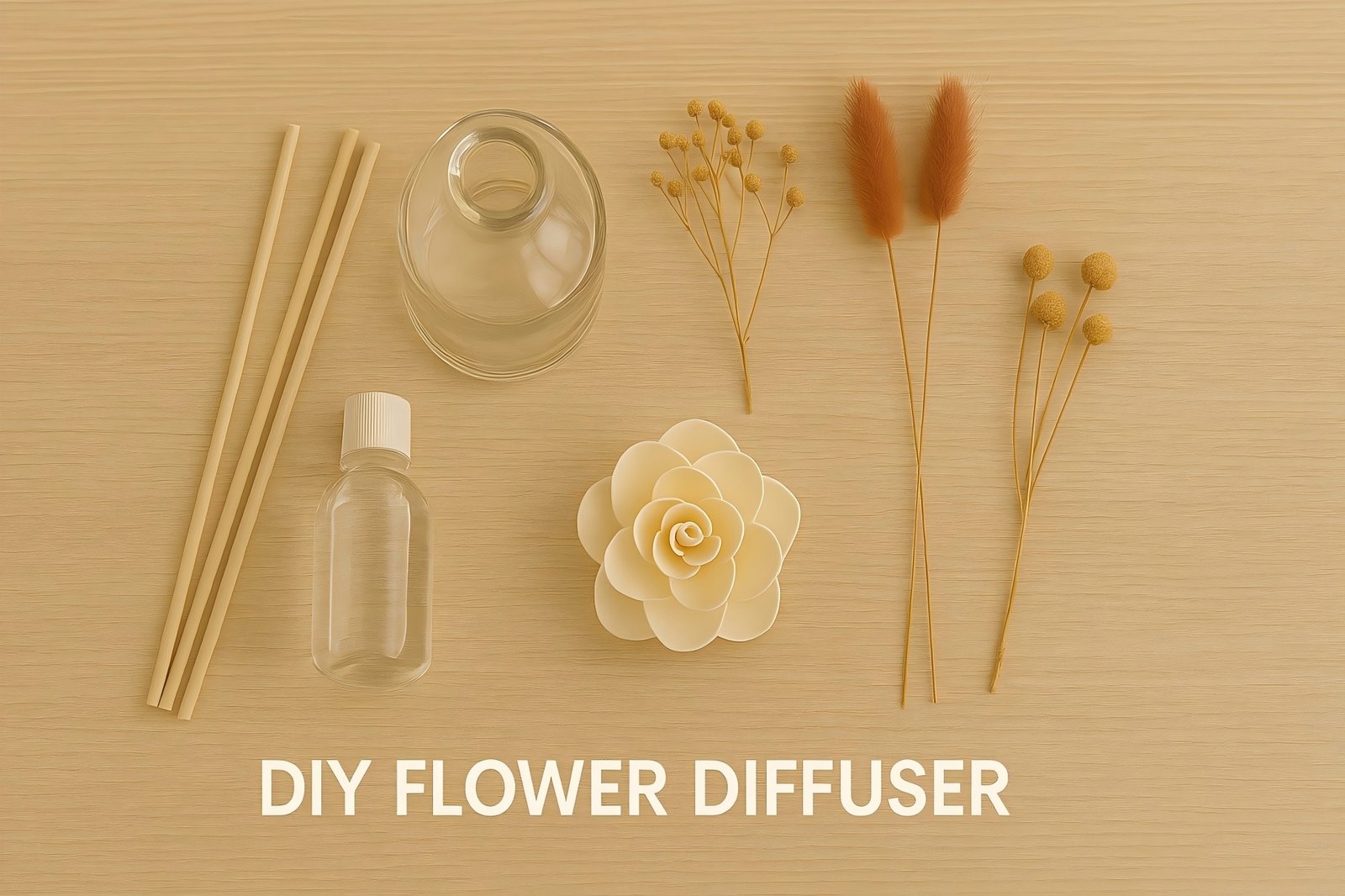
Essential Materials for Your DIY Flower Diffuser
Creating your own flower diffuser allows for complete customization. Here’s what you’ll need to get started:
Base Components
- Container: Glass vessels with narrow openings work best to control evaporation
- Carrier Oil: Fractionated coconut oil or dipropylene glycol (DPG) provide ideal viscosity
- Reed Sticks: Natural rattan reeds with multiple channels for optimal oil diffusion
- Essential or Fragrance Oils: Pure essential oils or high-quality fragrance oils
- Dried/Preserved Flowers: Lavender, roses, chamomile, or other decorative botanicals
Step-by-Step Creation Process
| Step | Action | Tips |
|---|---|---|
| 1 | Choose your container | Select a bottle with a narrow opening to slow evaporation |
| 2 | Mix carrier oil and fragrance | Standard ratio: 70% carrier oil to 30% fragrance oil |
| 3 | Fill container to 3/4 full | Leave room for flowers and reed displacement |
| 4 | Insert reeds | Start with 5-7 reeds depending on room size |
| 5 | Add dried flowers | Either inside the bottle or as decorative elements around the reeds |
| 6 | Let mixture stabilize | Allow 24-48 hours for reeds to fully absorb the oil |
In our manufacturing facility, I’ve experimented with countless combinations of oils and botanicals. My personal favorite is a blend of lavender and vanilla essential oils with dried lavender buds and small rosebuds. This combination offers both calming aromatherapeutic properties and creates a visually appealing focal point in any room.
For those concerned about oil quality, I recommend working with 100% pure essential oils rather than synthetic fragrances, especially if you’re creating the diffuser for relaxation or therapeutic purposes. The natural aromatherapeutic benefits add significant value beyond just pleasant scent.
How Long Do Flower Diffusers Last?
Curious about getting your money’s worth from a flower diffuser? Understanding the typical lifespan helps set realistic expectations for this home fragrance investment.
A properly made flower diffuser typically lasts between 2-4 months depending on the oil volume, reed count, environmental conditions, and flower inclusion. Diffusers containing dried flowers inside the oil may have slightly shorter lifespans as the botanicals can absorb some of the fragrance oil.
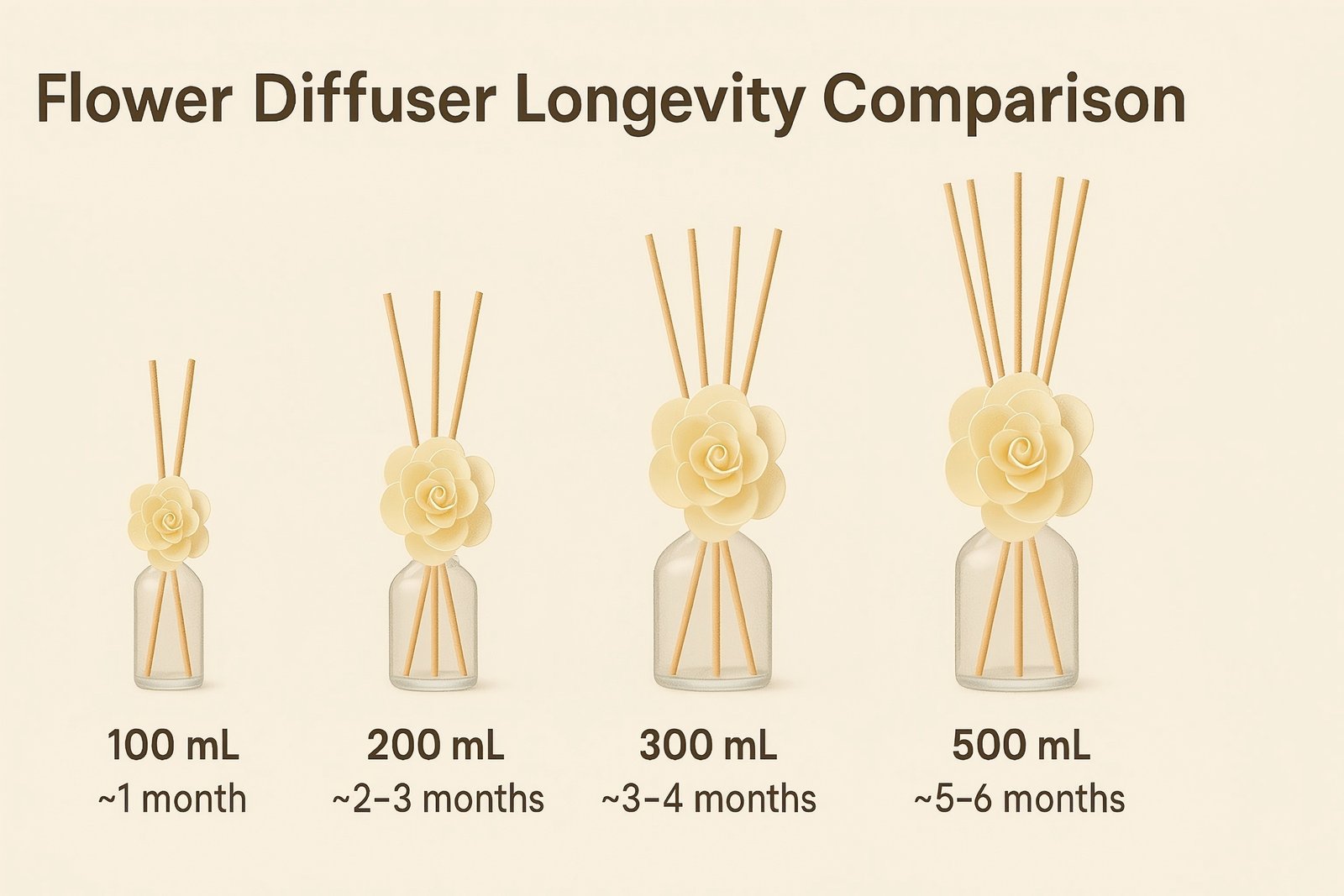
Factors Affecting Flower Diffuser Lifespan
Several key variables influence how long your flower diffuser will continue providing noticeable fragrance:
Environmental Influences
- Temperature: Warmer rooms accelerate evaporation, reducing lifespan by 25-40%
- Air Circulation: Areas with frequent airflow (near windows, fans, or vents) experience faster diffusion
- Humidity Levels: Dry environments cause more rapid evaporation than humid spaces
- Sunlight Exposure: Direct sunlight degrades both oils and flower components more quickly
Capacity and Composition Considerations
| Factor | Impact on Longevity | Optimization Strategy |
|---|---|---|
| Oil Volume | Larger volumes (200ml+) last longer | Choose appropriate size for your space needs |
| Reed Count | More reeds = stronger scent but shorter lifespan | Start with fewer reeds, add more as needed |
| Oil Composition | Natural oils evaporate faster than synthetic blends | Use DPG for longer-lasting performance |
| Flower Placement | Submerged flowers reduce effective oil volume | Keep flowers above oil level when possible |
I’ve conducted numerous longevity tests with our product development team, and we’ve found that placing flower diffusers in consistent temperature environments away from direct sunlight can extend their lifespan by up to 40%. For optimal performance, I recommend placing your flower diffuser in interior spaces with moderate airflow and stable temperatures.
One professional tip I share with our retail partners: recommend that customers flip the reeds (rather than replacing them) when fragrance begins to diminish. This simple action reactivates the scent pathway and can extend effective fragrance projection by several weeks.
Do Diffuser Reeds Need to Be Replaced?
Wondering why your once-fragrant diffuser seems to be losing its potency? The reeds themselves might be the culprit, but knowing when and how to replace them isn’t always intuitive.
Diffuser reeds typically need replacement every 4-6 months as they eventually become clogged with dust and dried oil residue. Signs that reeds need replacing include diminished scent throw, discoloration, or visible clogging of the reed channels despite having adequate oil remaining.
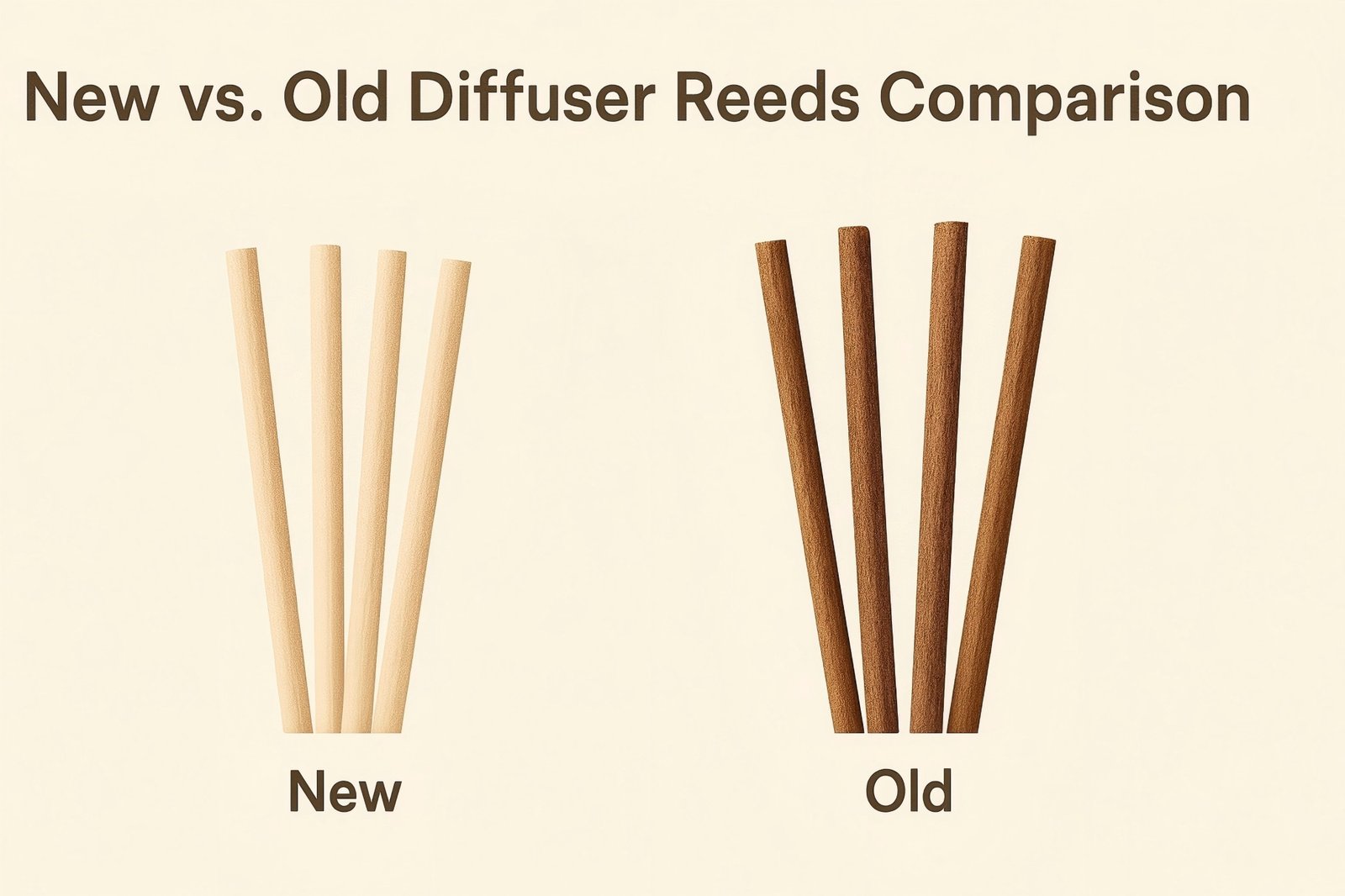
Reed Maintenance and Replacement Guide
Proper maintenance of your diffuser reeds can substantially impact both fragrance quality and longevity:
Reed Troubleshooting
Understanding when replacement is necessary versus when simple maintenance will suffice:
- Dusty Reeds: Can be gently wiped with a soft cloth
- Partially Clogged: Try cutting 1/4 inch off the bottom to expose fresh channels
- Fully Saturated: Complete replacement is necessary when reeds are dark throughout
- Scent Contamination: Always replace reeds when changing fragrance types
Reed Selection for Optimal Performance
| Reed Type | Benefits | Limitations |
|---|---|---|
| Rattan Reeds | Natural material, excellent capillary action | Can become clogged over time |
| Fiber Sticks | Modern appearance, consistent performance | Less traditional aesthetic |
| Charcoal Sticks | Superior scent throw, distinctive look | Higher cost, more fragile |
| Bamboo Reeds | Sustainable option, long-lasting | Sometimes less efficient diffusion |
Through our quality testing procedures, I’ve discovered that authentic rattan reeds with multiple visible channels consistently outperform other materials. The micro-capillaries in rattan create an efficient wicking system that draws oil upward and gradually releases fragrance into the air.
One technique I recommend to our customers is to actually keep a spare set of reeds for rotation. Rather than discarding used reeds immediately, let them dry completely for 3-5 days, then gently clean them with a lint-free cloth. This rotation system can effectively extend overall reed lifespan while maintaining consistent fragrance intensity.
Can I Use Dried Flowers as a Diffuser?
Intrigued by the idea of using dried flowers alone as a diffuser? This natural approach has both advantages and limitations worth considering before you try it.
Dried flowers can function as passive diffusers when soaked in essential oils, though they diffuse fragrance more subtly and for shorter periods (typically 1-3 weeks) than reed diffusers. This method works best in small, enclosed spaces like closets, drawers, or small bathrooms where gentle fragrance is preferred.
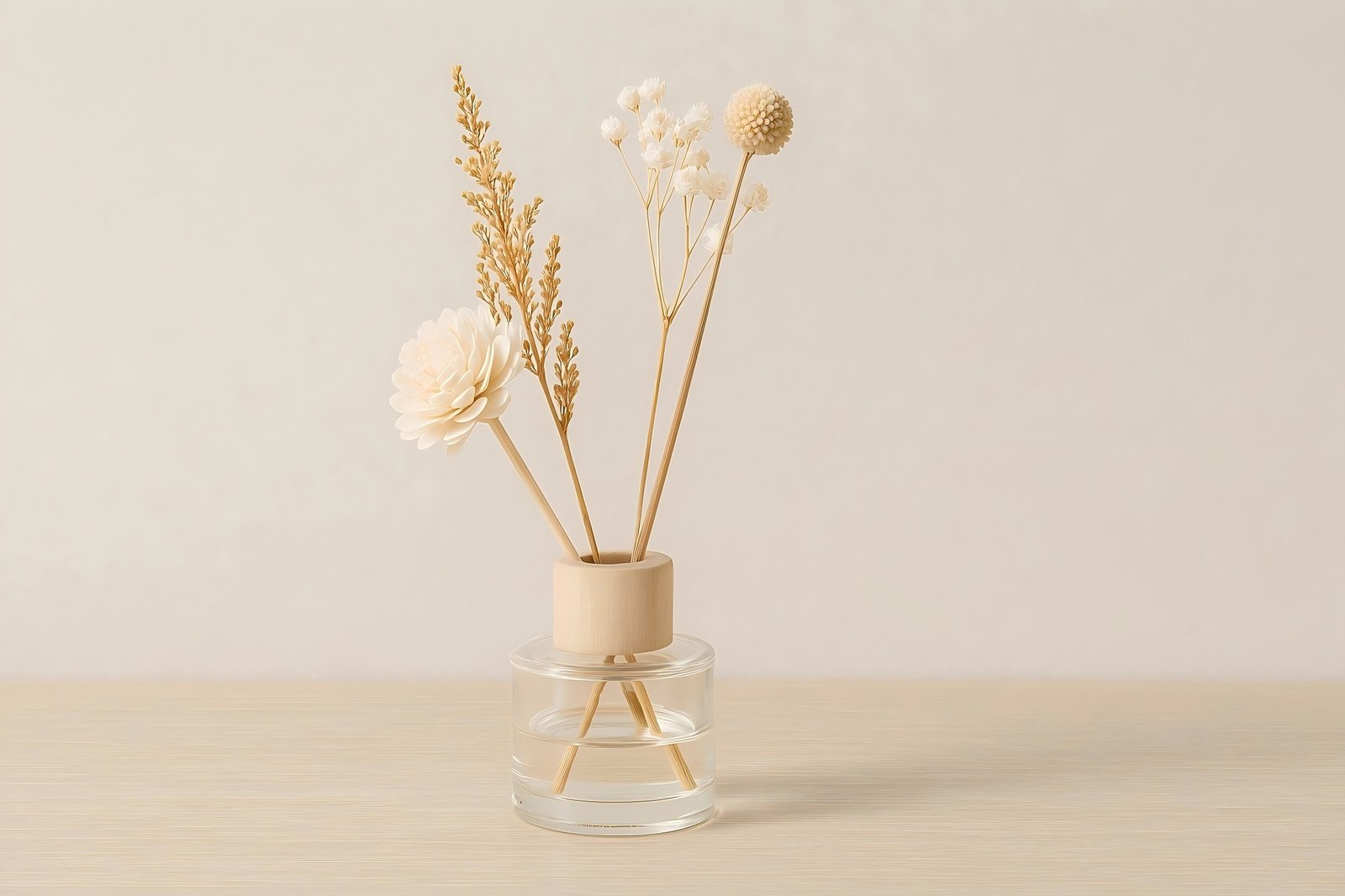
Creating Effective Dried Flower Diffusers
If you’re interested in exploring reed-free floral diffusion, here’s what you should know:
Best Flowers for Oil Absorption
Not all dried flowers perform equally when used as diffusion vehicles:
- Highly Absorbent: Lavender, roses, chamomile, and wooden flowers
- Moderately Absorbent: Statice, baby’s breath, and eucalyptus
- Minimally Effective: Delicate flowers like larkspur or dried hydrangea
Enhancement Techniques for Dried Flower Diffusers
| Technique | Process | Longevity Impact |
|---|---|---|
| Oil Refreshing | Add 5-10 drops weekly to dried arrangement | Extends life by 2-3 weeks |
| Heat Activation | Place near (not on) a heat source | Temporarily increases scent throw |
| Combining with Clay | Add unscented clay diffuser elements | Improves overall retention |
| Misting Method | Occasional mist with diluted oil solution | Reactivates dormant scent |
During our product development phases, I’ve experimented extensively with different absorption materials. One discovery I’ve made is that adding dried wood curls or balsa wood pieces to dried flower arrangements significantly enhances both oil retention and fragrance projection. The wood acts as a secondary diffusion medium, absorbing excess oil that would otherwise evaporate too quickly from the flowers alone.
For those preferring a completely natural approach, consider rotating dried flower bundles—keep one actively diffusing while another "rests" in a sealed container with a few drops of essential oil. This rotation allows for more consistent fragrance experience while extending the useful life of your botanical materials.
Can You Put Fake Flowers in a Reed Diffuser?
Considering artificial flowers for your diffuser setup? Silk or fabric flowers offer certain advantages over dried botanicals, but there are important considerations before combining them with fragrance oils.
Artificial flowers can be used as decorative elements in reed diffusers but should generally not be submerged in the oil solution. Modern synthetic flowers may deteriorate when exposed to concentrated essential oils, while fabric flowers can absorb oils, reducing diffuser efficiency and potentially becoming fire hazards.
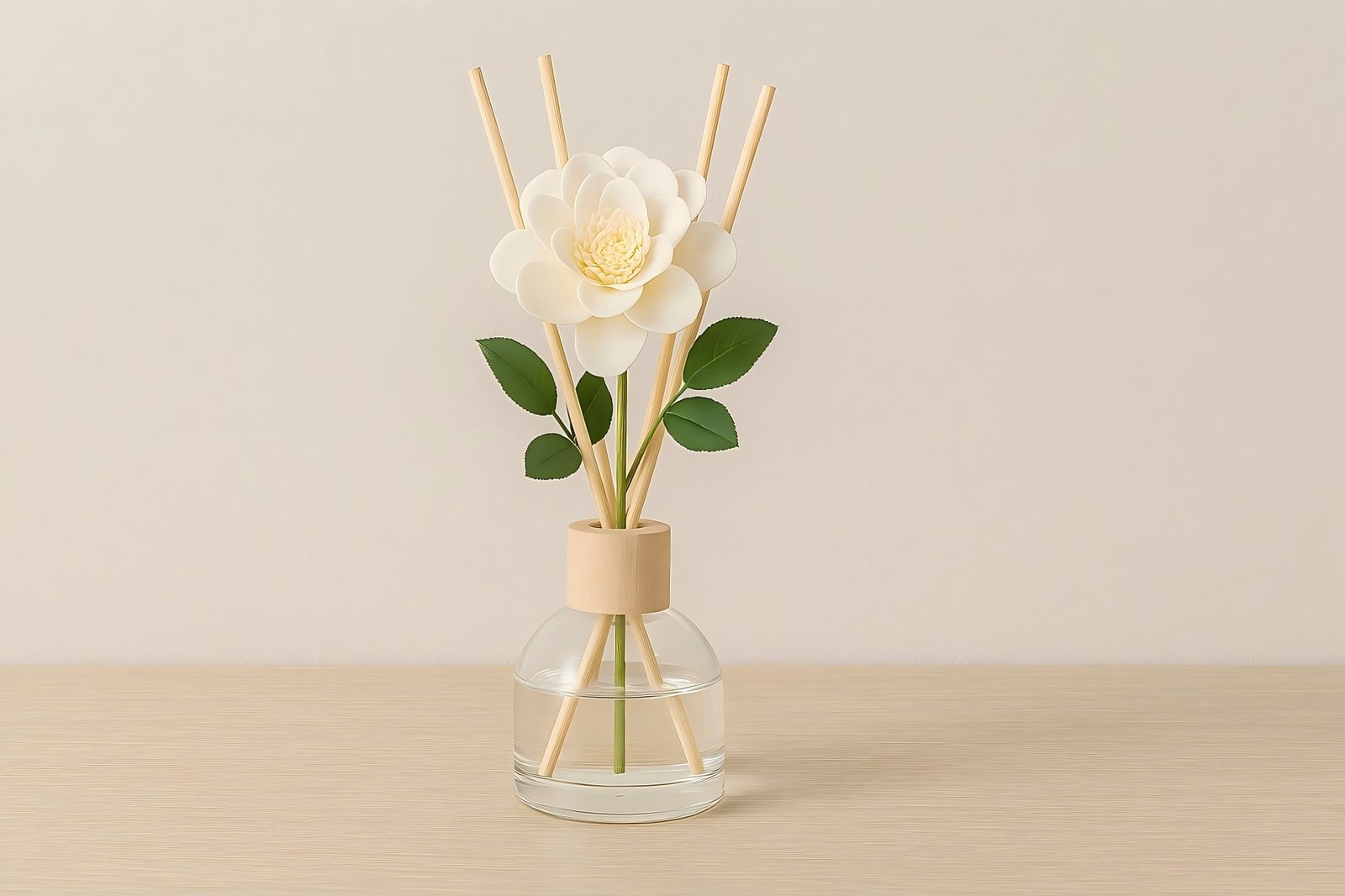
Best Practices for Artificial Flower Diffusers
When incorporating fake flowers into your diffuser design, follow these guidelines:
Material Compatibility Considerations
Not all artificial flower materials interact safely with essential and fragrance oils:
- Safe Materials: High-quality silk, certain polyesters, clay, or foam flowers
- Moderate Risk: Fabric flowers (may absorb oils over time)
- Avoid: Low-quality plastic flowers that can degrade or discolor in oil presence
Design Strategies for Artificial Flowers
| Placement Approach | Benefits | Considerations |
|---|---|---|
| Around Bottle Neck | No oil contact, purely decorative | Won’t affect diffusion performance |
| Partial Insertion | Creates illusion of submersion | Keep stems above oil line |
| Mixed Media | Combine artificial stems with dried elements | Best of both aesthetic worlds |
| Separate Vessel | Use flowers in companion vase near diffuser | Complete separation of function and form |
Based on my experience with our design team, I recommend the "halo method" for incorporating artificial flowers—arranging them in a circle around the diffuser neck rather than inserting them into the oil. This approach preserves both the flowers and the diffuser’s functionality while creating an integrated, decorative appearance.
For commercial applications, we’ve developed special oil-resistant artificial flowers specifically for diffusers. These specialized products use silicone-coated fabrics that resist deterioration when exposed to fragrance oils. While more expensive than standard artificial botanicals, they provide significantly longer decorative life when used in diffuser applications.
Can You Put Dried Flowers in Essential Oils?
Curious about combining dried flowers directly with essential oils? This popular approach has both aesthetic and functional implications worth exploring.
Dried flowers can be placed in essential oils, creating both visual appeal and potential scent enhancement. However, submerged flowers will gradually deteriorate and may alter the oil’s chemistry over time. This method works best with hearty botanical elements like dried lavender buds, rosebuds, and woody herbs that break down more slowly.
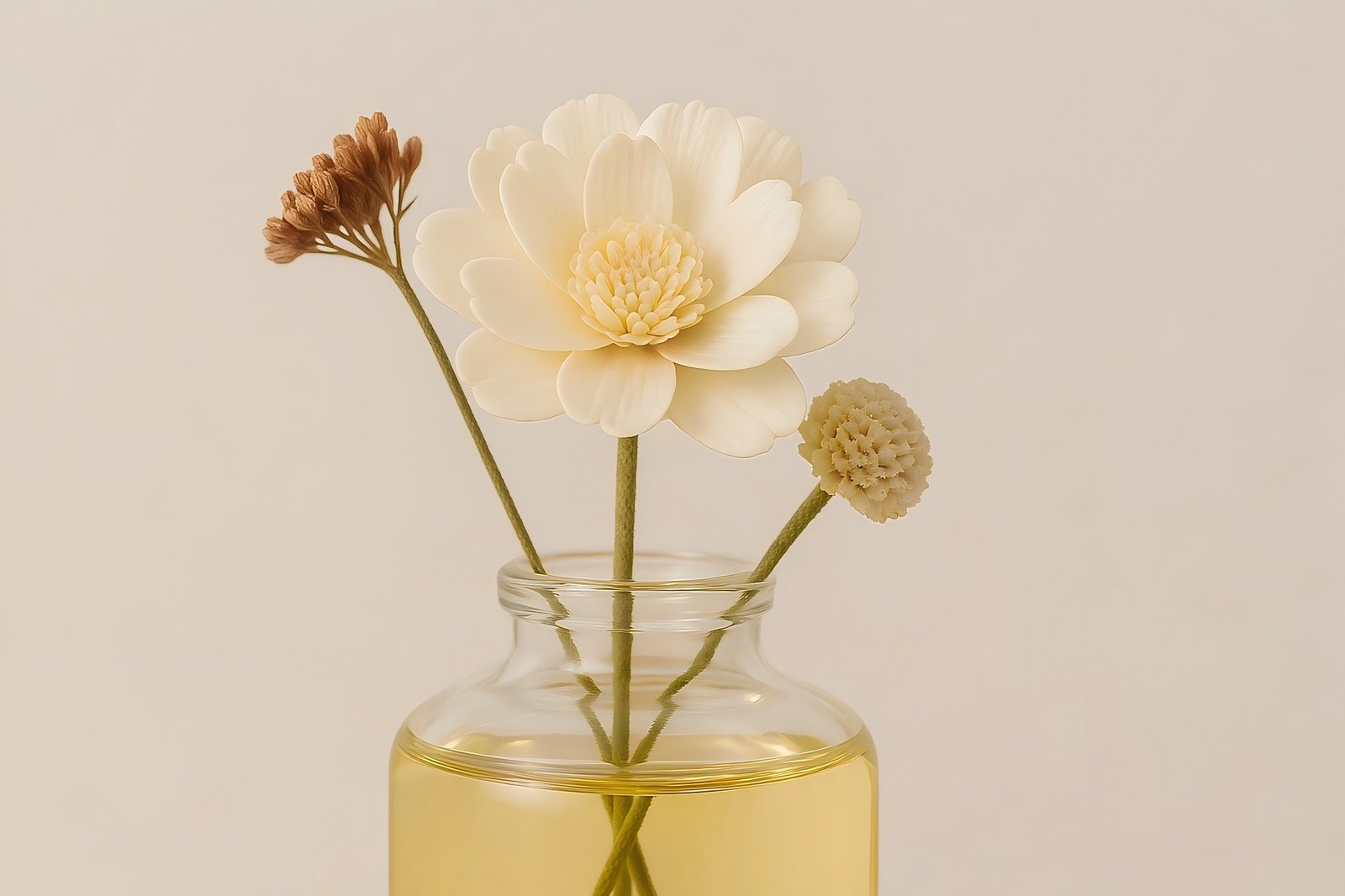
Practical Guidance for Flower-Infused Oils
If you’re interested in creating flower-infused diffuser oils, consider these expert insights:
Botanical Selection and Preparation
Proper preparation of dried flowers significantly impacts both appearance and performance:
- Thorough Drying: Ensure flowers are completely dehydrated (7-14 days minimum)
- Size Consideration: Smaller elements like buds and petals work better than whole flowers
- Complementary Scents: Choose flowers with natural fragrances that enhance your selected oils
- Color Stability: Test flowers for colorfastness before adding to light-colored oils
Performance Expectations and Maintenance
| Aspect | Behavior | Management Strategy |
|---|---|---|
| Oil Discoloration | Natural plant pigments will gradually leach into oil | Choose flowers with stable colorants or embrace the color change |
| Fragrance Alteration | Botanical matter may enhance or modify base scent | Test combinations in small batches first |
| Sedimentation | Plant material breaks down over time | Filter oil before complete breakdown occurs |
| Microbial Concerns | Potential growth in oils without preservatives | Add 0.5-1% natural preservative for longer shelf life |
Through our product development process, I’ve found that creating a "flower concentrate" can be more effective than direct submersion. We steep dried flowers in a small amount of carrier oil for 2-3 weeks, then strain and add this infused oil to the diffuser base. This technique captures the botanical properties without the maintenance issues of having plant material in the final product.
For those who prefer having visible flowers, consider using a two-layer approach: keep most flowers suspended above the oil line while allowing just a few decorative elements to touch the surface. This creates the desired aesthetic effect while minimizing oil contamination and extending the overall lifespan of both the diffuser and the botanical elements.
Conclusion
Flower diffusers blend form and function, offering customizable fragrance options with decorative appeal. Whether using dried flowers, artificial elements, or traditional reeds, the key to success lies in proper material selection, placement technique, and regular maintenance for lasting performance and aesthetic satisfaction.


